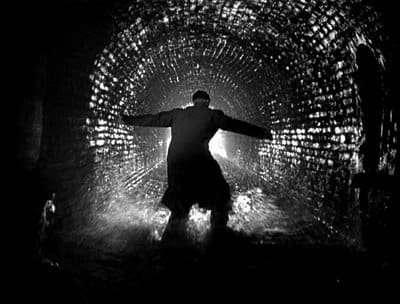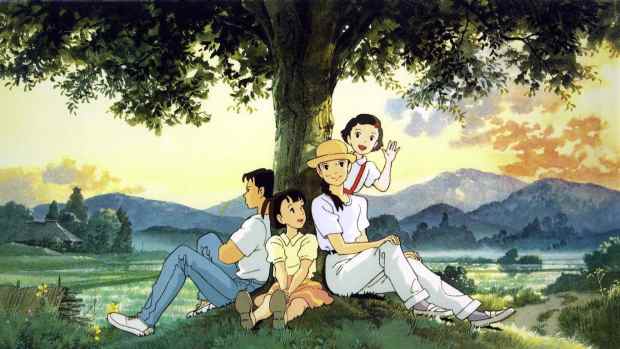How to Talk Like a Film Critic: Glossary of Film Terms
So You Want to Be a Film Critic
Presenting an A-Z guide for much of the language of film criticism.
Alan Smithee Film: A director seeking anonymity on a film will traditionally use the pseudonym Alan Smithee in the credits. This sometimes happens when directorial control has been tampered with and the director no longer wants to be associated with the completed film.
Auteur: Auteur is the French word for author and in film theory, refers to the director's personal vision; the director being the 'author' of the film. 'Auteurism' means analyzing films, to search out the defining features that might identify the director as the author. Auteur theory was developed in the 1950s by, among others, director Francois Truffault and noted film critic Andre Bazin, editor of the French film journal Cahiers du Cinéma (Cinema Notebooks)
B-Grade or B-Movie; Low budget, B-grades are often shot by an independent director or one who has lost his gloss. They commonly have a cheesy storyline and star no-name, second-rate actors, fresh starlets, or aging stars looking for retirement funds. However, some B-grade films have a low budget but a talented cast, good director, and an interesting and/or unusual storyline and end up cult classics. Both Whatever Happened to Baby Jane? and Double Indemnity were rated as B-grade on release but later became cinema classics.
Bomb: A film devoid of merit or a financial flop.
Cineaste or Cinephile: Film enthusiast.
Cinéma vérité: Translates as truth cinema. Cinéma vérité grew out of French Cinema in the 1960s and refers to a film movement that uses documentary-style techniques to create realism. Influenced by the neorealist (see below) film movement of post-World War II Italy, as well as post-war British documentaries, characters are shown in real-life, everyday situations and employ authentic dialogue and natural action. Sometimes referred to as "kitchen sink" drama.
Colourisation: Process of recreating old black and white films in colour and generally regarded as a no-no by film buffs, who reason that films originally shot in b&w weren't designed for colour and thus nuances may get lost. Arose in the 1980s.
Decoupage: In film, decoupage refers to the editing process and literally translated, means 'to cut up'. However, it usually indicates a particular style of editing, in which the transitions between shots lends continuity to the narrative.
Denouement: The defining point of the film. The denouement is that part of the film, just past the climax, where everything is resolved (or not, depending on the flavour).
Deus ex machina: Deus ex machina refers to a clumsy plot device, by which problems in the storyline are conveniently resolved by improbable event/s or situations, usually at the end of the film.
Diagesis: Those elements in a film that logically and realistically exist within the narrative; eg; a bird singing, a radio playing, dialogue – as opposed to illogical mood elements such as a background musical score, a narrator, etc.
Film Noir: Film noir is a dark and shadowy genre that deals with danger and moral ambiguity. The style emerged from b&w B-dramas of the 1940s and has been hugely influential on a number of directors – including Roman Polanski, whose 1974 film, Chinatown, was created in the noir style. Film noir is often cynical in tone, and visually early noir was influenced by the German expressionist films of an earlier decade.
Fourth Wall: An invisible wall that divides the characters from the audience. Sometimes the fourth wall is deliberately broken through for effect, such as when a character stops mid-action to talk to the audience.
Genre: Genre originated in literary criticism but in cinema terms, it refers to the characteristic style and construction of a film and similarities in the narrative. Typical examples of film genres might include Westerns, Musicals, Romances, Black Comedies, Cyberpunk, Crime, Sci-fi, Thrillers, etc.
Grand Guignol: Translates as grand puppet. A gruesome, gothic melodrama.
Leitmotif: Originally a musical term leitmotif is sometimes used in a film context to describe a recurring theme within a film. For example, in the movie Jaws a distinctive, menacing musical piece is used throughout the film to indicate the presence of the shark. The leitmotif need not be musical – it can be a repeated image, sound, or word; e.g., in Citizen Kane the leitmotif is rosebud.
McGuffin: A term popularised by Alfred Hitchcock to denote a plot device that drives the main character/s and draws the audience in, though it may have little or no real significance – in plot terms, it's usually a red herring. Often the McGuffin is an object, such as the falcon in The Maltese Falcon or the microfilm in North by Northwest. In Psycho the Macguffin is the theft of $40,000, yet as the film progresses we see this has little importance. Another example is the cloud of radioactive dust that floats over Scott Carey in The Incredible Shrinking Man. It seems important, yet throughout most of the film, the audience has been more concerned with the effects of the shrinkage than the causes.
Mise-en-scène: A French term used to describe the design aspects of a film, mise-en-scène incorporates key aspects such as lighting, props, set design, and costume. More recently, the term has been broadened to include reference to a director's attempt to get across all the information about a scene in a single shot. For example, a character's internal struggle may be conveyed through nuances in the lighting and set design – thus a mise-en-scène is created.
Montage: In a cinematic context, montage refers to a series of shots edited together to create either the passage of time or symbolic meaning. In the very early days of film-making, narratives were created in one long take, rather than by different shots edited together. From the French, montage translates as assembly, and means the putting together of parts of a film to form a cohesive and meaningful sequence. For example, take two separate shots: one of a girl walking on a railroad track and another of a fast-traveling train. Put them together in the right sequence and you create the idea that the girl is in danger of being destroyed by the train. Similarly, a filmmaker can create symbolic meaning through juxtaposition. A shot of a man and woman walking through a fairground interspersed with a shot of a merry-go-round horse moving up and down creates a sexual innuendo, albeit a fairly tired one.
Narrative Film: A film that tells a story in a traditional, linear way where you have a series of events linked by cause and effect. Thus the story moves forward logically with each scene dependent on the one before.
Neorealism: Characterised by a desire for authenticity, neorealist directors employ real-life scenarios, no special effects, authentic locations, often no-star casts, natural or no make-up, and simple camera work (no tricks). As a result, the films have a documentary-like feel. The term was first used by critics to describe Viscottonti's film, Obsessions, after its release in1942; the movement reached its zenith through the work of post-war Italian directors such as Roberto Rossellini and Victoria de Sica.
New Wave Cinema: New Wave had its roots among the French filmmakers of the 1950s and '60s. The term was coined by critics to describe those filmmakers who rejected traditional forms of cinema in favour of experimenting with narrative, editing style, and visual images. New Wave directors considered themselves auteurs, influenced by Neorealism and Cinéma vérité. Francois Truffault and Jen Luc Goddard are two famous directors of New Wave: Their films often have a gritty, 'street' feel and they often used handheld cameras, improvisation, and a non-linear framework.
Psycho Noir: A blending of film noir and psychological drama; e.g., Mulholland Drive and Blue Velvet.
Rack Focusing: Rack focusing is a means of directing the viewer's eye to a particular part of a sequence by means of blurring out part of the image on the screen, so that only a particular area remains in clear focus.
Stock Character: A minor, usually stereotypical character whose actions are wholly predictable.
Swashbuckler: A genre that denotes high action/adventure in romantic, historical settings. Swashbuckler films feature heroic, resourceful, and physically adept characters who often engage in dangerous activities, such as sword fighting,
Tech-noir: A combination of film noir and science-fiction or cyberpunk; e.g., Blade Runner and The Terminator.
Tentpole: A blockbuster/star-cast/high-budget film that is expected to prop up the studio and compensate for the flops.
Vignette: A scene or segment within a film that is a contained story in itself. Vignettes are sometimes used in postmodern films that don't follow a conventional structure, as displaced, self-contained scenes, in order to reveal certain aspects of a character, an idea, or even an object.
Z-movie: Campy, trashy, and usually exploitative films that make B-graders look good.
Film Resources
- Film Education | Resources
Film Education provides free online resources on films for primary and secondary students across the curriculum as well as a library of PDF film notes
Comments
Jane Bovary (author) from The Fatal Shore on April 05, 2011:
Rachael, haha, yeah 'Z' is as low as you can go. Thanks for reading!
Jane Bovary (author) from The Fatal Shore on April 05, 2011:
jadugan, thanks and do check out The Incredible Shrinking Man. It's a fun flick...and "deep" for a 50's sci-fi..;)
Jane Bovary (author) from The Fatal Shore on April 05, 2011:
Hey Simone...thanks!
Rachael Lefler from Florida on April 04, 2011:
Good job. As an amateur anime critic here on hubpages (and it helps that I speak french) I knew some of these, but I didn't know a lot for example the origin of the term "MacGuffin" or the fact that there were Z-Movies in addition to B-Movies! (I'm picturing [no pun intended] the $5.00 bin or some of the movies on Hulu and Youtube.)
jadugan from Radford, Virginia on April 04, 2011:
I love this! The clip you added was really cool, I definitely want to see that film now! Thanks!
Simone Haruko Smith from San Francisco on April 04, 2011:
This is so nifty! I am DEFINITELY going to refer to this in the future... hahaa, maybe I'll be able to talk about films without reverting to my own silly references.





